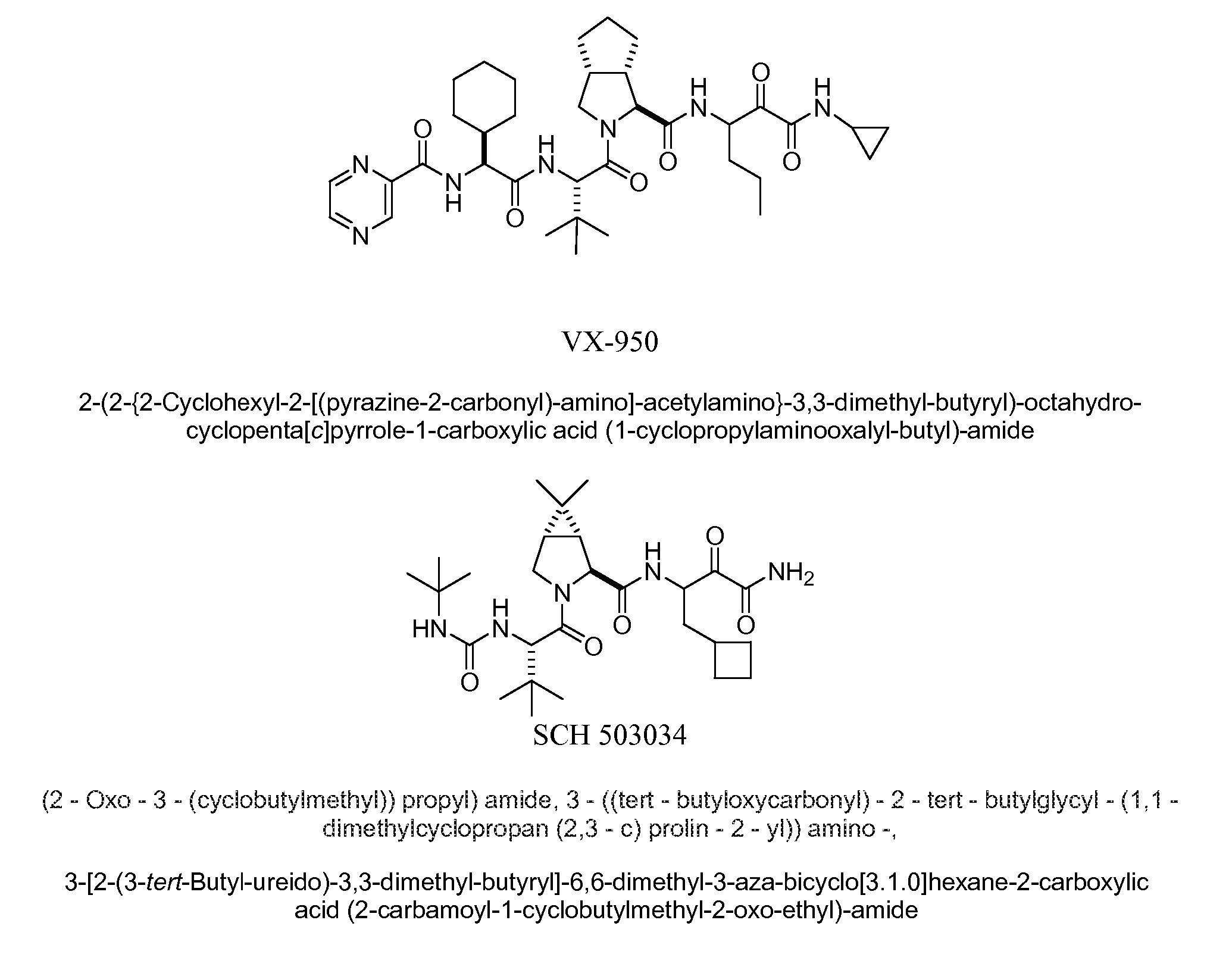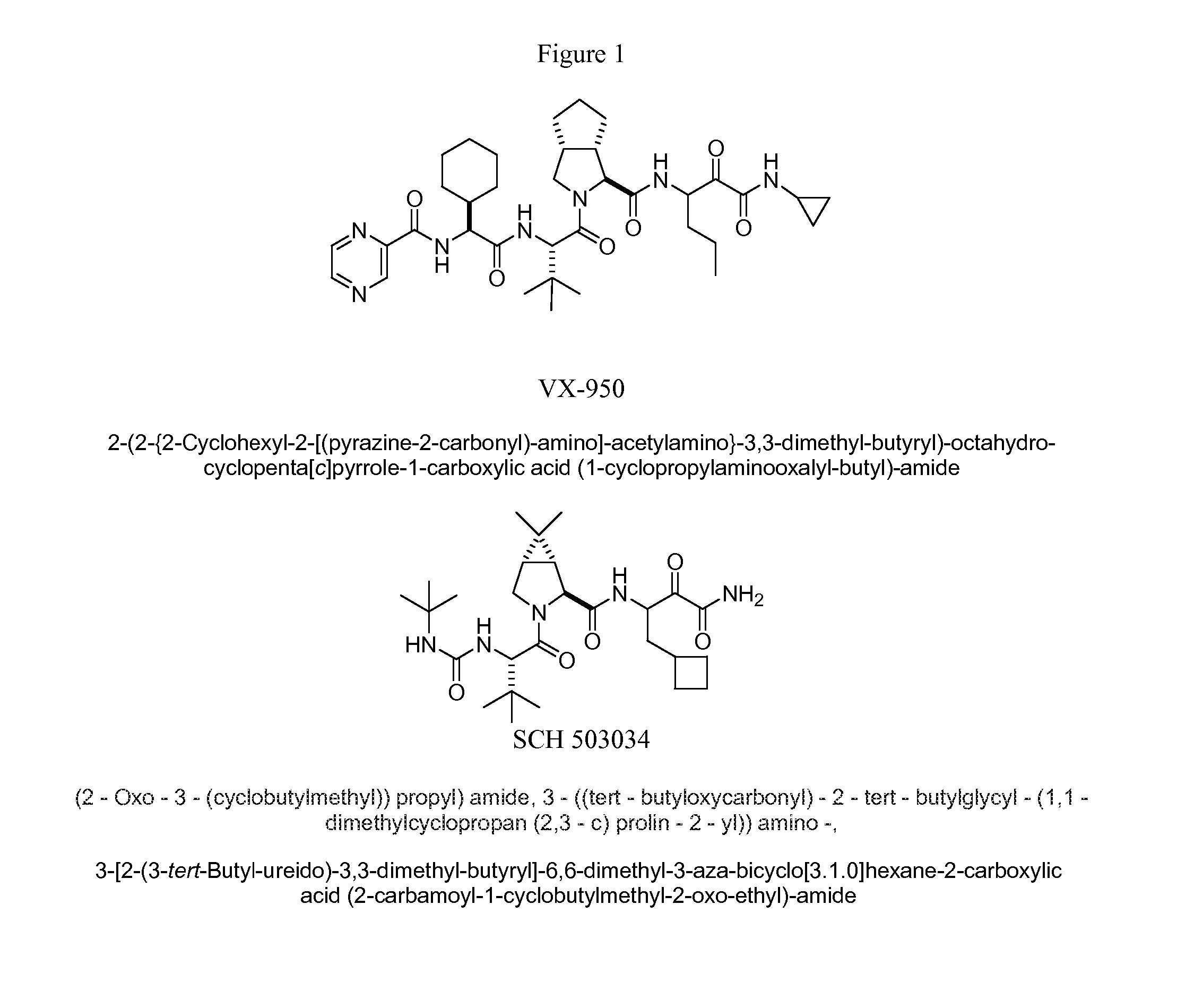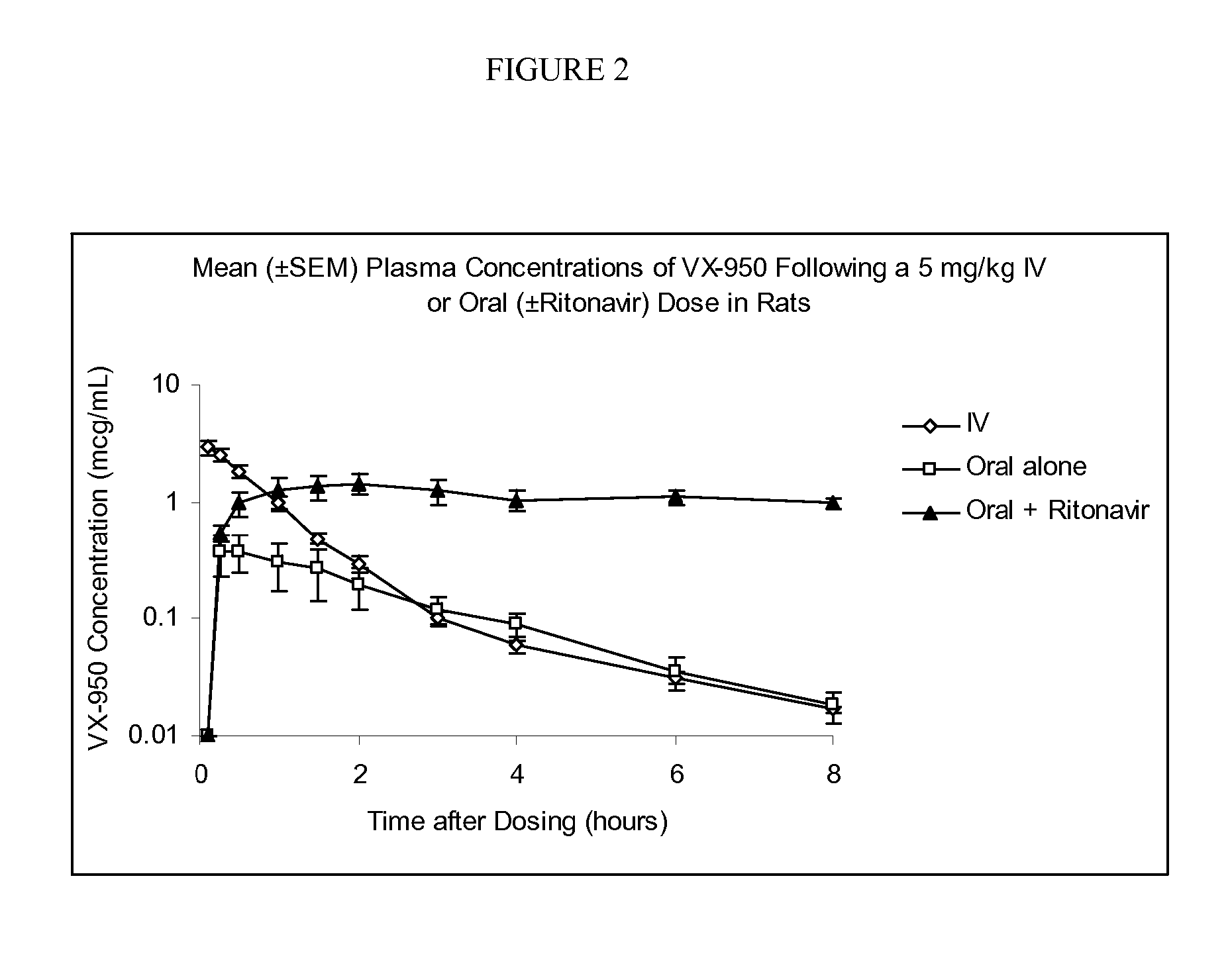Compositions and methods of use of ritonavir for treating hcv
a technology applied in the field of compositions and methods of use of ritonavir for treating hcv, can solve problems such as cirrhosis and liver cancer, and achieve the effect of improving the pharmacokinetics of pharmaceutical agents
- Summary
- Abstract
- Description
- Claims
- Application Information
AI Technical Summary
Benefits of technology
Problems solved by technology
Method used
Image
Examples
example 1
Inhibition of the Metabolism of VX-950 and SCH 503034 in Human Liver Microsomes
[0024]Liquid handling was carried out on a Tecan EVO robotic system. Triplicate incubations were carried out at a final test compound concentration of 1 μM with 0.5 mg / ml microsomal protein, and 1 mM NADPH. Pooled human liver microsomes (1 mg / ml protein) and NADPH cofactor (2 mM) were prepared in 50 mM phosphate buffer at pH 7.4. Stock solutions (10 mM) of VX-950 or SCH 503034 were prepared in DMSO and then diluted to 100 μM in 1:1 acetonitrile / water. The solutions of compounds were added into the NADPH cofactor solution containing 0, 0.8 or 8 μM of ritonavir in a 2 ml 96-well plate. The resulting solution was added to the microsomes (1:1) that had been pre-incubated for 10 minutes at 37° C. Samples (0.1 ml) were incubated in 96-well plates at 37° C. for 0, 10, 20 and 30 min in a Tecan 4-slot incubator. At each time point, the robotic arm removed one of the replicate plates and the reactions were stopped ...
example 2
Inhibition of the Metabolism of VX-950 and SCH 503034 in Rat Liver Microsomes
[0028]Using the procedure of Example 1, but substituting rat liver microsomes for human liver microsomes, the presence of ritonavir inhibited the metabolism of VX-950 and SCH 503034 in the following manner:
Metabolism of VX-950 and SCH 503034 in Rat Liver Microsomes in the Absence or Presence of Ritonavir
[0029]
Concentration of ritonavir (micromolar)00.44.0Percent of Compound Remaining at t = 30 minutesVX-9502571100SCH 50303462100100Percent Inhibition of Metabolism by RitonavirVX-950061100SCH 5030340100100
example 3
Enhancement of the Plasma Levels of VX-950 by Coadministering with Ritonavir in Rats
[0030]The pharmacokinetic behavior of VX-950 was characterized following a single 5 mg / kg intravenous or oral dose in Sprague-Dawley derived rats (n=3 per group); an additional group of three rats received a 5 mg / kg oral dose of VX-950, coadministered with a 5 mg / kg oral dose of ritonavir. VX-950 (±ritonavir) was prepared as 5 mg / mL solution in a 10% DMSO: 90% PEG-400 vehicle for both oral (±ritonavir) and intravenous administration. The 1 mL / kg intravenous dose was administered as a slow bolus (˜1 minutes) in a jugular vein of the rats under isoflurane anesthetic; the 1 ml / kg oral dose (±ritonavir) was administered by gavage. Serial blood samples were obtained from a tail vein of each animal 0.1 (IV only), 0.25, 0.5, 1, 1.5, 2, 3, 4, 6 and 8 hours after dosing. The heparinized samples were placed on ice immediately following collection. Plasma was separated by centrifugation and stored frozen for su...
PUM
| Property | Measurement | Unit |
|---|---|---|
| concentration | aaaaa | aaaaa |
| concentration | aaaaa | aaaaa |
| flow rate | aaaaa | aaaaa |
Abstract
Description
Claims
Application Information
 Login to View More
Login to View More - R&D
- Intellectual Property
- Life Sciences
- Materials
- Tech Scout
- Unparalleled Data Quality
- Higher Quality Content
- 60% Fewer Hallucinations
Browse by: Latest US Patents, China's latest patents, Technical Efficacy Thesaurus, Application Domain, Technology Topic, Popular Technical Reports.
© 2025 PatSnap. All rights reserved.Legal|Privacy policy|Modern Slavery Act Transparency Statement|Sitemap|About US| Contact US: help@patsnap.com



